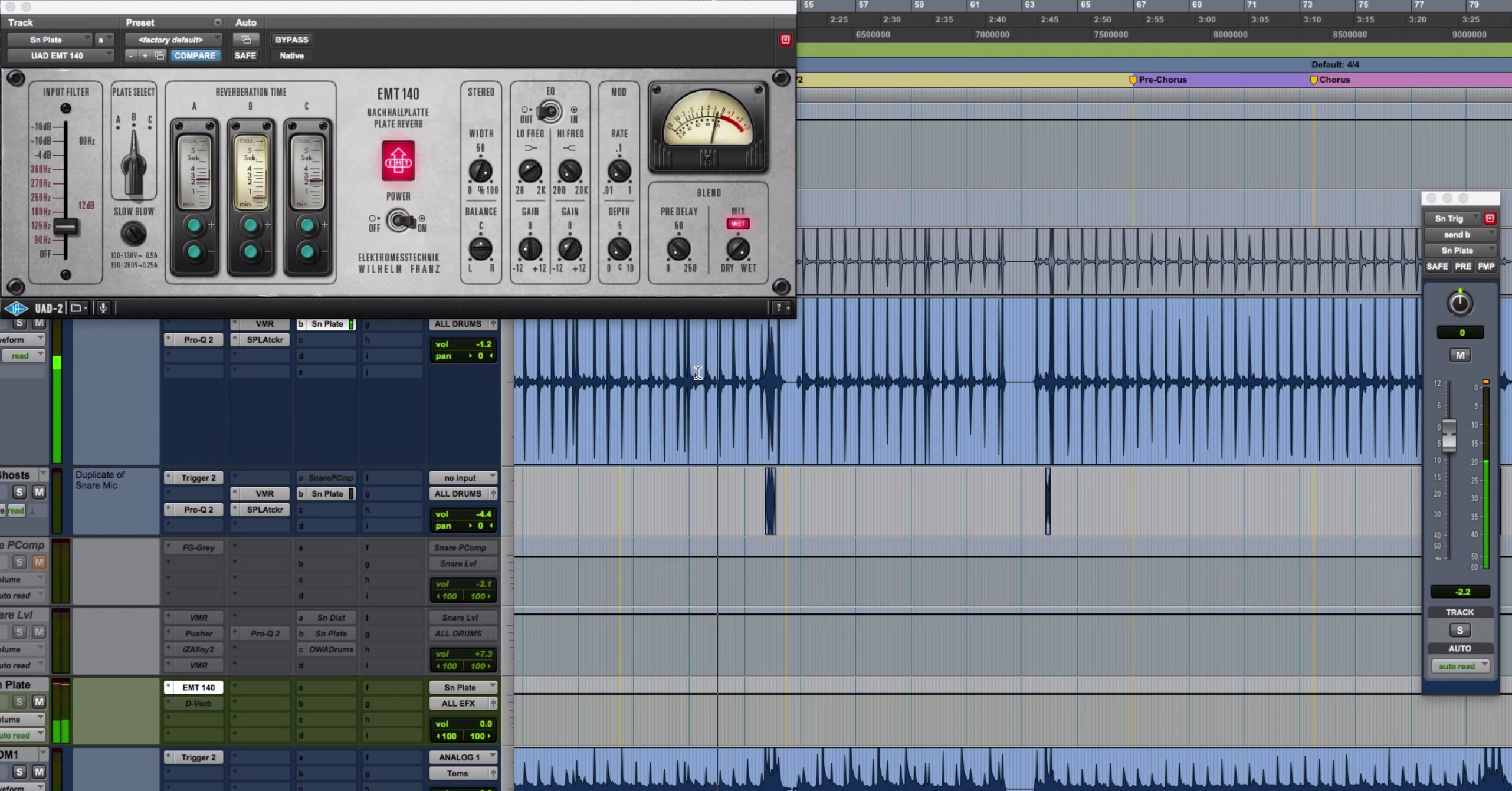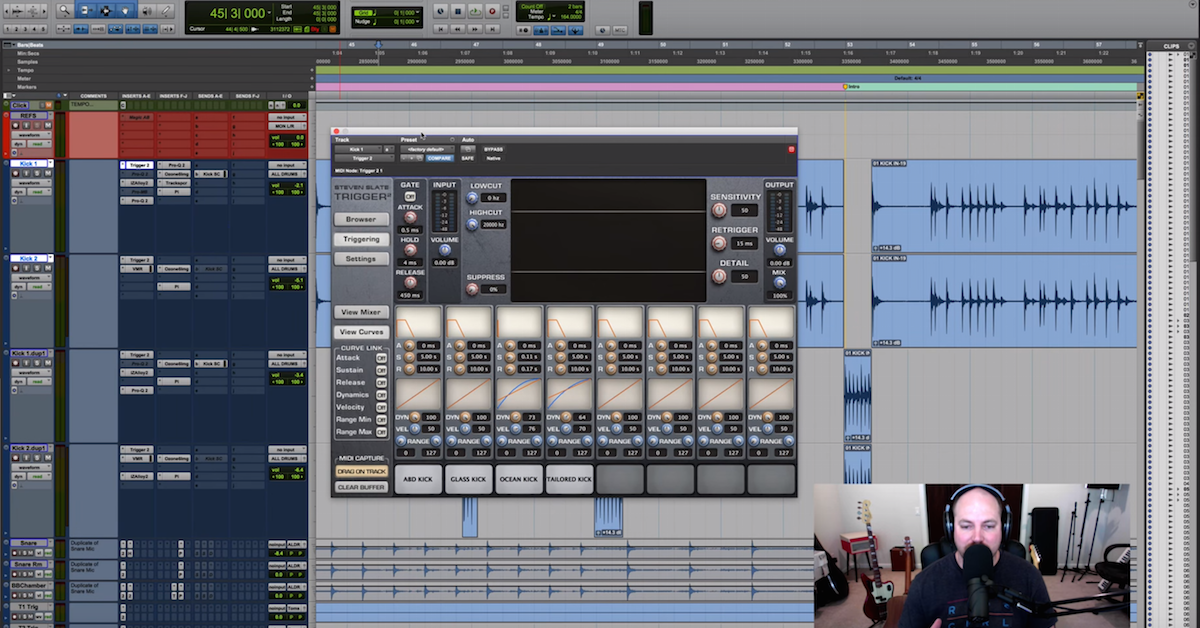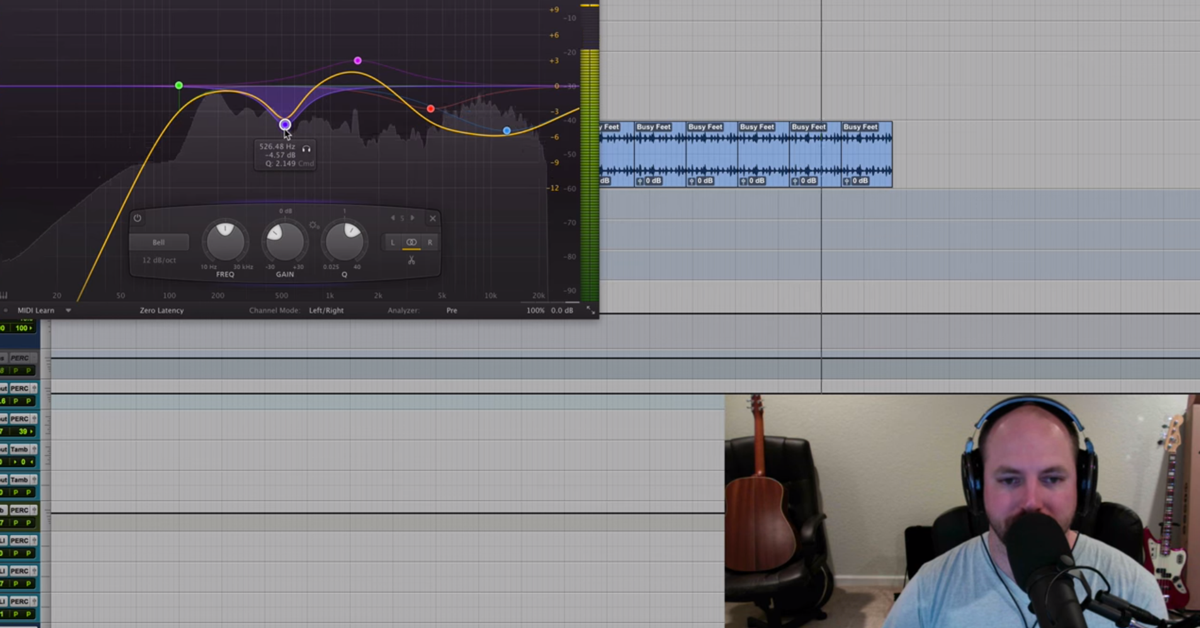A Guide to Drumheads in the Recording Studio
Article Content
Drumheads are drumheads, right? One style fits all. Not quite. There is major variance in tone that drumheads contribute to the sound of a drum.
As some of you know by now, my philosophy is to record the best sound you possibly can and not mess with it less later.
Why try to do something with a plugin that should have been done at the beginning.
Drums are tricky enough to record. it’s not going to be fun to have to dissect them later.
Any studio that owns a drum kit for recording should have a few options for heads. Drummers do not show up with their own heads. Choosing heads also means you have to have a good grasp on the music you’ll be recording.
Are you recording modern rock? An 80’s vibe? A 60’s vibe? They’re all very different. A modern drumkit with modern heads isn’t going to sound very 60’s no matter how you tune it.
A recording is the sum of all parts. You take time to contemplate what room mics you’ll use on the kit. But, engineers sometimes miss the importance of the instruments themselves.
Skinz
Originally, drums had calfskin heads on them. They were a bit of a pain, as the tuning would change from shifts in temperature and humidity.
They sound really fantastic though. There is a warmth from them that really stands out. Think Gene Krupa toms.
A modern use of this sound would be those T Bone Burnett sound with drummer Jay Bellarose.
Although it’s pretty hard to find calfskin heads these days, there is another option.
The Remo drum company makes what they call a fiberskyn head. It’s a synthetic version of a calfskin head. Is it exactly the same? No. But, it’s pretty close and more consistent with tuning.
They sound amazing on all drums for a real vintage sound.
White Coats
The next evolution of heads to get that 60’s sound is single-ply coated heads. In the Remo line these are known as Coated Ambassadors. This is a pretty classic drum sound.
Tip: Everyone raves about new drumheads, but I like to keep a set of old ones around to really get that vintage sound. Drummers didn’t use new heads that often on sessions back in the day.
Think Beach Boys Hal Blaine sound.
There are different weights in the coated range. Ambassador being the lightest. You can choose to taste. Remember as the head gets thicker you lose sustain.
Modern Love
Drum sounds are quite different these days. Listen to a Beatles record and then a Foo Fighters record. Both good music, but very different instrument sounds.
Modern drum sounds are often using heavier heads that have their own muting and EQ built in. A good example of this are the heads from Evans. They make a wide line of different types of “muting” and EQ.
In theory, this means you won’t have to use as many tricks for drum dampening. You can put away the tea towels and moon gels for the most part.
It also means they’re designed to be more dominant in certain frequencies. Meaning, they’re supposed to sound like an already mixed bass drum.
To achieve this sound with traditional drum heads would take some time and skill. The Evans heads are kind of a fast track to it.
Velocity
Some things are good to keep in mind when choosing heads for a session. It will be harder to get a good sound with a light drummer and modern heavy heads.
Those heads really like to be hit. The opposite applies to light heads. Although they can take a hit, they’re not really meant for constant heavy playing.
Polka Dots
During the 70’s and 80’s, clear heads with black dots on them were popular. They have more of a dead sound than coated ambassadors. They were also designed to take more impact.
As we go through decades you’ll notice the ply of drumheads getting thicker. This is something to think about when choosing heads for a sound.
Do’s and Don’ts
I’m sure after reading this you see why it’s obviously not a good idea to stick a jazz drummer behind a kit with an Evans EMAD Heavyweight bass drum head.
Equally not wise to put a drummer who plays Cannibal Corpse behind a kit wide open with Fiberskyn heads.
Control Freak
You have less control when the drummer brings their own kit. Although, It’s still nice to have some common sized drumheads sitting around to try in a pinch.
It’s wise to have a chat with the drummer before the session if they’re bringing their own kit. It’s also a good idea to hear the drummer before a session to know a little bit about their playing.
In Da House
I can’t even count the times I’ve walked into a nice studio to find a nice kit with the wrong heads for the session.
Often there are no other heads around and you end up being stuck and twitching/tweaking later. The hours I could have saved on those sessions if they just had the right heads. Sigh, never getting that time back.
The extra time spent upfront saves a lot of time downstream.






